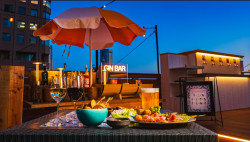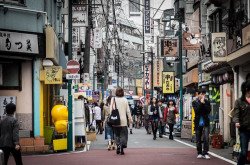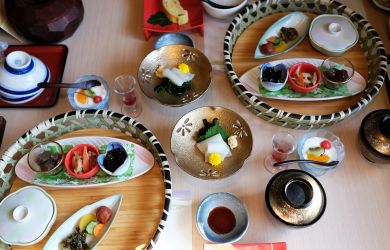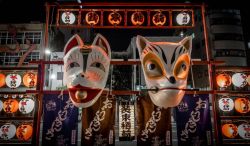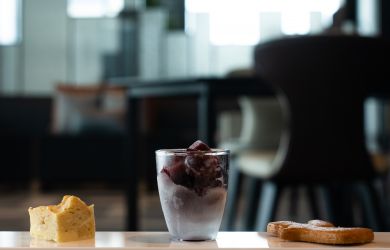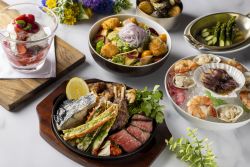
Originally published on metropolis.co.jp on December 2009

Have you always been an artist? Yes, since I was very young, as my father is also an illustrator. He apparently gave me a few ounces of his talent, because when I was in primary school, I was frequently asked to draw famous characters like Superman and Captain Harlock.
Who were your early influences, and who are they now? In my childhood, I read a lot of French and Belgian comic books, so artists like Hergé (of Tintin fame) and Franquin (Spirou) influenced me hugely until the tsunami named Akira, by Katsuhiro Otomo, hit in 1989. Otomo’s style and narration were mind-blowing, and he initiated the “manga wave” of the early ’90s, with such authors as Masamune Shirow (Appleseed) and Akira Toriyama (DragonBall). I still enjoy manga, but my style has evolved into something more European. Curiously, it also changed significantly when I arrived in Japan. Now my absolute god is Yves Chaland, creator of Le Jeune Albert and Freddy Lombard, whose mastery of drawing and storytelling, combined with a great sense of humor and irony, are immortal.

Courtesy of Martin Faynot
Was it art that brought you to Japan seven years ago? Originally it was my deep interest in Japan. As this country is all about design and image, I thought that it would be an interesting challenge to continue and make progress with my illustration work here.
Who have you created works for in Japan? Serious projects started in 2006 with the publication of the Sekai no Shokuji children’s books, about eating habits around the world, for which I did the illustrations for France, Italy, Germany, Spain and Portugal. I also worked for publishers such as Seibido Shuppan, Benesse Corporation, Hakusuisha, Asahi Shuppan, Marble Books and AEON. As well as my personal projects, I do weekly illustrations about Tokyo on NHK’s JIB TV website (http://blog.jibtv.com/j-bloggers).

Courtesy of Martin Faynot
Is the art world particularly competitive in Japan? As many people do the same job, it can make things competitive, but there are also hundreds of publishers and thousands of publications, so it’s balanced and there’s work for everybody.
How do you make your work stand out from the crowd? One of the best compliments I get is “this drawing couldn’t be done by someone Japanese.” Maybe it’s because of the atmosphere—which is somehow European—or the attitudes and expressions I try to put into my characters.
What makes Jimbocho a good part of the city to draw? There’s a particular atmosphere in this part of Tokyo. Kanda-Jimbocho has an incredible concentration of old bookstores, vintage cafes and shops. Historically speaking, it’s known as “Tokyo’s Quartier Latin.” Almost everything is “charming,” and it’s easy to draw.
Hon to Machi no Annaijo
Martin Faynot. Kanda Quartier Latin Jimbocho. Illustration. Until Dec 11, free. 1-7-7 Kanda-Jimbocho, Chiyoda-ku. Open Mon-Sat 11am-5:30pm, closed Sun. Nearest stn: Jimbocho. http://go-jimbou.info/annaijo
